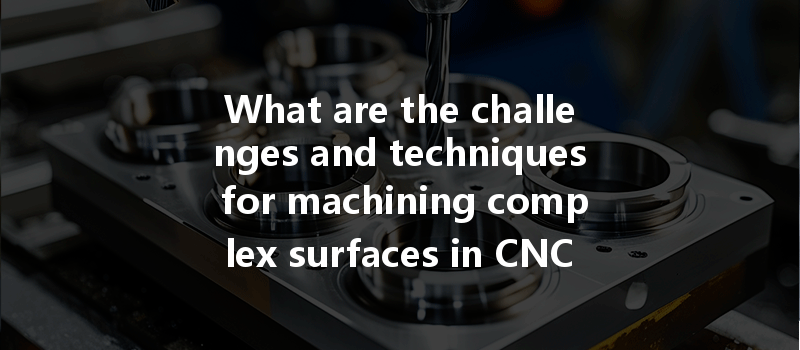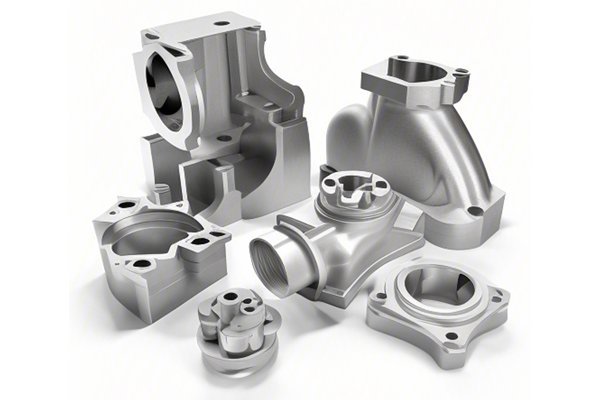Did you know that nearly 80% of manufacturing costs can be attributed to the machining processes of complex surfaces? This staggering statistic highlights just how critical efficient machining techniques are to the success and profitability of modern manufacturing. As the demand for precision-engineered components with intricate geometries continues to rise, understanding the challenges and techniques for machining complex surfaces in CNC processing has never been more important.
to CNC Machining of Complex Surfaces
CNC (Computer Numerical Control) machining is a modern manufacturing process that utilizes pre-programmed computer software to control machinery. This allows for more precision and repeatability than traditional methods. However, the task of machining complex surfaces presents a unique set of challenges that requires careful consideration of design, tool selection, programming, and quality control.
In this article, we will explore the challenges faced during the machining of complex surfaces and the techniques that can be applied to overcome them. By understanding these critical issues, manufacturers can optimize their processes, reduce costs, and enhance the quality of their products.
Challenges in Machining Complex Surfaces
The first major challenge in CNC machining of complex surfaces is the intricacy of the tool path. A tool path must be designed to ensure that the cutting tool can precisely follow the desired contour of the workpiece. The complexity increases with the number of features, curves, and angles in the part’s design.
Solution: Solid CAD/CAM Software
Utilizing advanced CAD (Computer-Aided Design) and CAM (Computer-Aided Manufacturing) software can significantly ease the complexity of tool path generation. These software solutions enable manufacturers to visualize the machining process and simulate the tool paths before executing them on the actual machine. The software can optimize the tool path to minimize machining time and reduce tool wear.
Not all CNC machines are created equal. Some are limited in terms of the maximum angle or depth they can achieve, which presents further complications in machining complex surfaces.
Solution: Invest in Advanced CNC Machines
Investing in high-quality CNC machines with 5-axis capabilities allows manufacturers to machine complex geometries that would traditionally require specialized equipment. These machines can access various angles, providing flexibility and precision that are vital for intricate parts.
As complex surfaces may require multi-directional cutting, tool wear becomes a critical factor. Tools may degrade quickly when traversing tough materials or navigating intricate geometries.
Solution: Select Advanced Tooling Materials
Using advanced tooling materials, such as carbide or ceramic inserts, can enhance durability and wear resistance. Additionally, employing coatings like TiN (Titanium Nitride) or TiAlN (Titanium Aluminum Nitride) can further extend tool life and performance.
Machining operations generate significant heat, which may distort the workpiece or affect surface finishes. This is particularly concerning when working with heat-sensitive materials or complex shapes that require tight tolerances.
Solution: Optimize Coolant Use and Cutting Parameters
Using the right coolant can help manage heat generation, ensuring that both the workpiece and tool remain stable during machining. Controlling cutting speeds and feeds can also reduce thermal stresses, while maintaining the right balance can optimize the overall machining process.
Ensuring that the final product meets stringent quality standards is often more challenging with complex surfaces. The risk of deviations from the intended specifications increases, leading to rework or scrap.
Solution: Implement In-Process Inspection Techniques
Incorporating in-process inspection methods, such as laser scanning or touch probes, allows for real-time monitoring of part accuracy. This technique helps to catch errors early in the process, minimizing the risk of producing defective components.

Techniques for Machining Complex Surfaces
Having addressed the challenges, let’s explore techniques that can aid in effectively machining complex surfaces.
Utilizing sophisticated tool path strategies, such as adaptive machining or high-speed machining, allows for efficient material removal and improved surface finishes. By adjusting the speed and feed rates according to the geometry of the workpiece, manufacturers can optimize productivity.
Implementing multi-axis CNC machining allows for more intricate cuts and reduces the need for multiple setups. 5-axis machines, for example, can work on five different axes simultaneously, enabling highly complex geometries to be machined in a single operation.
Before physical machining begins, simulations can provide valuable insights into potential issues. Virtual testing can help identify any tool path problems or collisions and offer alternative machining strategies.
Adaptive control systems automatically adjust cutting conditions based on real-time data collected during machining. This means that if the system detects excessive vibration or tool wear, it can change the feed rate or speed to maintain optimal cutting conditions.
After machining, advanced post-processing techniques, such as surface grinding, polishing, and heat treatment, can further enhance the quality of complex surfaces. These processes can remove any minor imperfections and improve the overall surface finish.
Real-World Applications and Case Studies
To further illustrate the importance of mastering these challenges and techniques, let’s look at some real-world applications where complex surface machining has made a significant impact.
Aerospace Components
In the aerospace industry, components often feature complex geometries for optimal performance. Manufacturers use 5-axis CNC machines to produce intricate shapes for turbine blades, housings, and other critical parts. Leveraging advanced tools and techniques has resulted in better fuel efficiency and reduced weight for aircraft.
Medical Devices
Medical devices also require precise machining to ensure functionality and safety. Components such as surgical instruments and implants must have intricate details that allow for effective performance. Utilizing advanced machining technology, medical device manufacturers create parts that meet stringent regulatory standards.
Automotive Industry
The automotive sector frequently demands high-precision components with complex designs, such as engine blocks and transmission housings. Adopting CNC machining practices with a focus on minimizing tool wear and enhancing surface finishes has allowed automotive manufacturers to produce components that improve performance and reliability.
In summary, the challenges of machining complex surfaces in CNC processing can significantly impact a company’s efficiency and product quality. By understanding these challenges and implementing effective techniques, manufacturers can improve their processes and outcomes.
From investing in advanced machinery to adopting adaptive control technologies and rigorous quality control measures, the right strategies are crucial for machining complexity in today’s competitive landscape. Companies that fail to adapt risk falling behind, as the demand for precision-engineered components continues to escalate.
As you reflect on these insights, consider how your organization can leverage this knowledge to optimize your CNC machining processes. By investing in advanced techniques and technologies, you can enhance your overall manufacturing capability and position yourself for success in an increasingly complex world.






